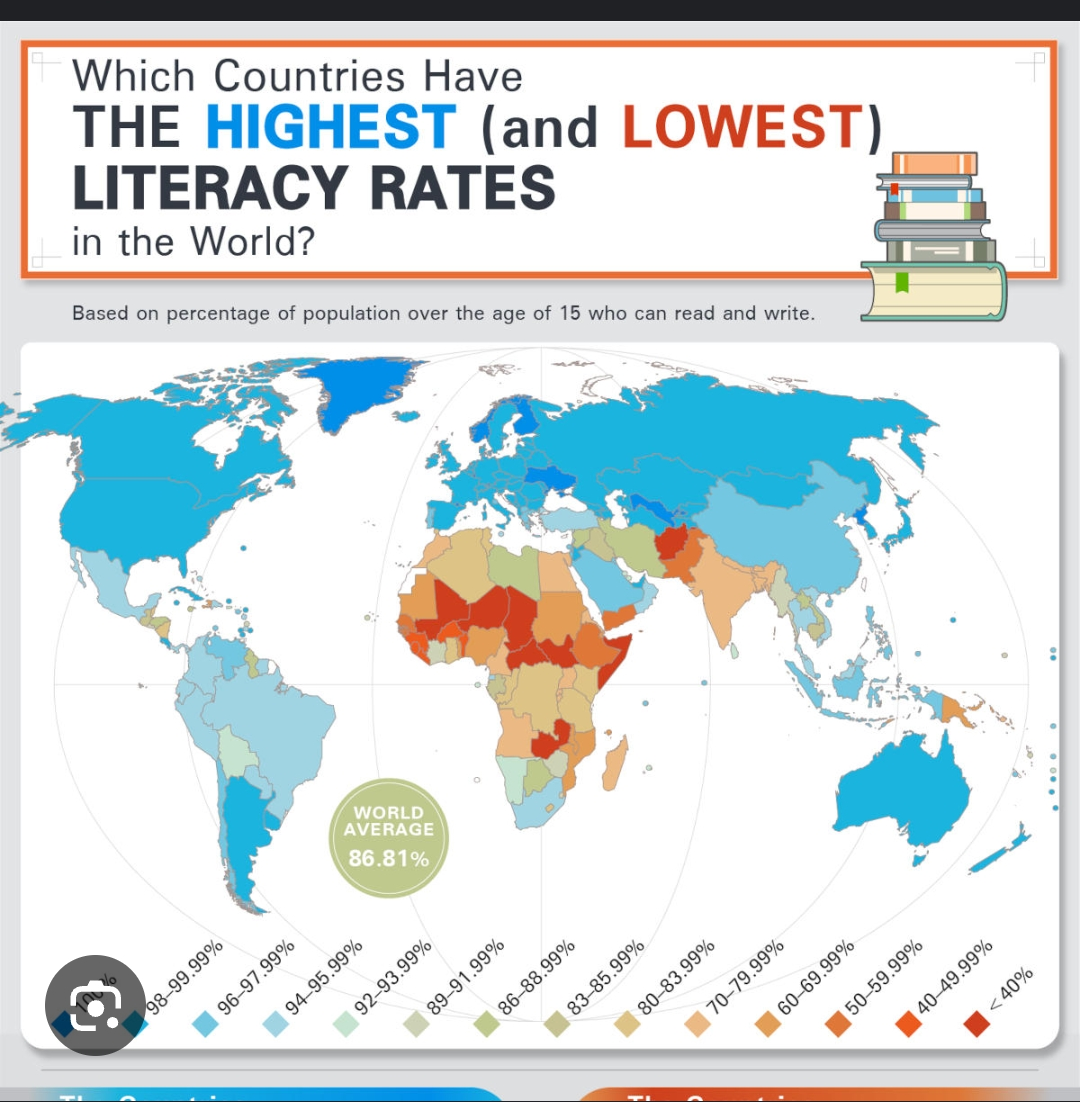Global Literacy Rate Map Nearly 90%


David Chen
Data Visualization Specialist
David Chen is an expert in transforming complex geographic datasets into compelling visual narratives. He combines his background in computer science ...
Geographic Analysis
What This Map Shows
The visualization titled "Literacy Rate Reached Almost 90% Worldwide" provides a comprehensive overview of the global literacy rates across different countries. It illustrates the percentage of the population aged 15 and older who can read and write, offering a clear snapshot of educational attainment globally. This information is not only vital for understanding educational progress but also sheds light on economic development, social stability, and overall quality of life in various regions.
Deep Dive into Global Literacy Rates
Literacy is a fundamental skill that underpins personal and societal development. Interestingly, as of the latest reports, global literacy rates have soared to nearly 90%, a significant milestone that reflects decades of educational initiatives and policies. This achievement is not merely a number; it represents the lives of millions of individuals who, through the ability to read and write, can access better job opportunities, engage more fully in their communities, and navigate the complexities of modern life.
However, the journey toward universal literacy has been uneven. The reasons for disparities in literacy rates often stem from a combination of historical, economic, and cultural factors. For instance, regions like North America and Western Europe boast literacy rates close to 100%, while parts of Sub-Saharan Africa and South Asia still struggle with rates below 70%. This disparity raises critical questions about the accessibility and quality of education in these regions.
In many developing countries, efforts to improve literacy have focused on increasing access to primary education. For example, the Global Partnership for Education has been instrumental in funding initiatives that aim to build schools, train teachers, and develop curricula tailored to local languages and cultures. Such efforts have proven effective; countries like Ethiopia and Bangladesh have made remarkable strides in boosting their literacy rates over the past two decades.
Interestingly, literacy extends beyond the mere ability to read and write. It encompasses a range of competencies, including digital literacy, which has become increasingly important in our technology-driven world. As societies evolve, so too must our definitions of literacy. Today, being literate often means having the skills to navigate digital platforms, which can be a challenge in areas where access to technology is limited.
Regional Analysis
When we break down the literacy rates by region, the contrasts become even clearer. In East Asia, countries like Japan and South Korea exhibit literacy rates of nearly 100%, thanks to robust educational systems and cultural values that prioritize education. In contrast, parts of South Asia, particularly Afghanistan and Pakistan, face ongoing educational challenges, with literacy rates hovering around 60% in some areas. This can be attributed to factors such as political instability, gender discrimination in education, and rural-urban divides that limit access to schools.
Africa presents a mixed picture. Countries like South Africa and Kenya show literacy rates above 80%, bolstered by government initiatives and community programs aimed at adult education. However, in regions affected by conflict or economic hardship, such as the Central African Republic, literacy rates can plummet to below 40%. Comparatively, the Middle East shows a varied landscape; while nations like Israel and Qatar enjoy high literacy rates, others, such as Yemen, struggle with educational access amidst ongoing turmoil.
Significance and Impact
The significance of literacy extends far beyond individual achievement. Higher literacy rates correlate with improved economic performance, reduced poverty levels, and better health outcomes. Countries with higher literacy rates often enjoy more stable democracies and lower levels of corruption. Moreover, as we look towards the future, the importance of literacy will only grow. With the rise of artificial intelligence and an increasingly digital economy, the ability to learn and adapt will be paramount.
Looking ahead, there are both challenges and opportunities. Global initiatives like the United Nations' Sustainable Development Goals emphasize education as a critical component of sustainable development. As we push towards the goal of universal literacy, it is essential to ensure that educational systems are inclusive and equitable, addressing the needs of marginalized groups, including women and rural populations.
In conclusion, the journey towards achieving nearly universal literacy is a testament to the power of education and its role in shaping societies. As we celebrate the achievements made, it is crucial to remain vigilant and committed to addressing the disparities that still exist. After all, literacy is not just a skill; it’s a pathway to empowerment and a brighter future for individuals and communities worldwide.
Visualization Details
- Published
- September 17, 2025
- Views
- 90
Comments
Loading comments...